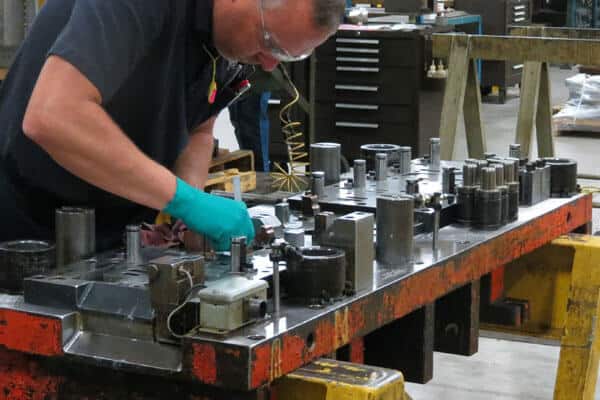Any glitch in the sequence of events affects everything else. Everyone’s role in the factory is equally important. A die is cast. A part is stamped. Excess material is trimmed. It moves on to the welder, followed by a sanitation cleaning so that pressure-testing and quality control can proceed. The final product is packed and shipped to an end-user. Maybe it becomes the bumper on your pickup truck, or perhaps it floats atop the surface of your community’s water tower so the civil engineers know if the levels get low. Our lifestyles are quietly enabled by countless invisible contributions from underappreciated workers.

Now add to this the succession planning challenges that are hitting the manufacturing industry differently. Simply, there are fewer forty-somethings eager to take over the leadership reins from the retiring sixty-somethings. An aging workforce can’t transfer unique knowledge to up-and-comers when there aren’t any up-and-comers. Some skills are at serious risk of becoming extinct.
Sounds like a recipe for disaster, right? Not everywhere. There are role models who have solved the puzzle and empowered the next generation of manufacturing. Their solutions are anchored in common sense. They are the same workplace culture strategies that succeed in any industry. On a recent visit to a client location, our team of culture consultants observed the following universal ‘green flags’:
- The environment was bright, clean, colorful, and inviting.
- To a person, everyone was friendly and welcoming – not just to the visitors, but with each other.
- The workplace was populated by multiple generations of talent, many of whom had referred friends and neighbors.
- Teaching and mentoring were happening in real time.
- Space was dedicated in anticipation of capturing an innovative, untapped customer segment.
- A family-like atmosphere supported friendships inside and outside of the workplace.
- No one needed to track accountability for work getting done. Everyone took unspoken ownership of their role.
- The 150-year history of the business was honored and celebrated.
- Employees expressed trust and respect for their leadership. The choice to provide full pay to all employees during an 8-week COVID-related shut-down provided a powerful message from ownership.
The state of affairs in this case example may not be typical and doesn’t occur overnight because a CEO decides to implement a culture-fix. It is the inevitable outcome of an unbending commitment sustained over multiple business cycles, high and low. If these aren’t the features of your workplace, it’s likely time to challenge the status quo.

